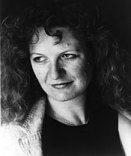 “… the hijab, niqab, jilbab, chador and burqa. I can’t think of a more dramatic visual symbol of oppression, the inescapable fact being that the vast majority of women who cover their hair, faces and bodies do so because they have no choice…. Muslim women in this country may [sic] be telling the truth when they say they are covering their hair and faces out of choice, but that doesn’t mean they haven’t been influenced by relatives and male clerics….
“… the hijab, niqab, jilbab, chador and burqa. I can’t think of a more dramatic visual symbol of oppression, the inescapable fact being that the vast majority of women who cover their hair, faces and bodies do so because they have no choice…. Muslim women in this country may [sic] be telling the truth when they say they are covering their hair and faces out of choice, but that doesn’t mean they haven’t been influenced by relatives and male clerics….
“The veil in its various forms signals that women have conditional access to public space, allowed to participate in the world outside the home only if they follow certain rules…. when women cover themselves, they are demonstrating their acceptance of an ideology that gives them fewer rights than men and an inferior place in society….
“Far from being a protection for women – it hasn’t prevented alarming levels of rape in Afghanistan and Iraq – the veil protects men from casual arousal. It also establishes women as the sexual property of individual men – fathers, husbands and sons – who are the only people allowed to see them uncovered.
“In that sense Mr Straw’s interventions, while useful in kicking off an overlong debate, do not go nearly far enough. The practice of covering women is a human rights issue in two senses, not just as a symbol of inequality, but because accusations of racism, cultural insensitivity and Islamophobia are commonly used to silence its critics. But if I loathe the niqab and the burqa when I see women wearing them in Iraq and Afghanistan, it would be hypocritical to pretend I don’t find them equally offensive on my local high street.”
Joan Smith, Independent on Sunday, 8 October 2006
